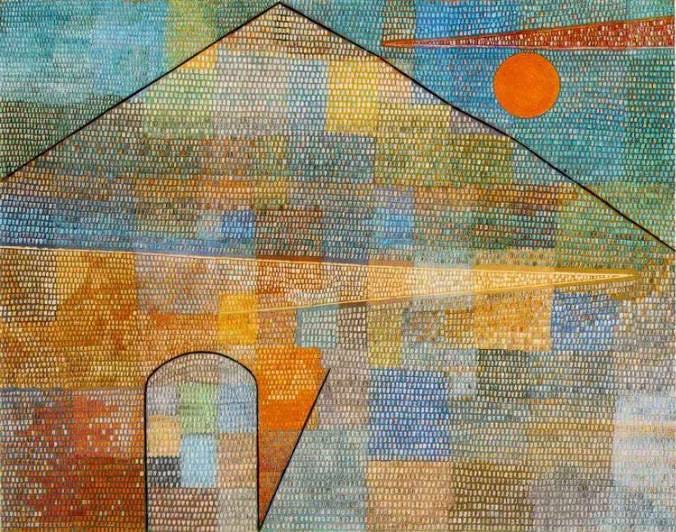Meaning Surplus: Beyond the Explicit
From Umberto Eco's meaning surplus to Michael Polanyi's creative integration
Umberto Eco, a master of semiotics and literary theory, popularized the term "meaning surplus" to explain a fascinating phenomenon: how texts and communications often generate more meaning than their creators originally intended. This concept, rooted in the field of semiotics – the study of signs and symbols – is a powerful tool for understanding how meaning is created, shared, and interpreted in a complex world.
Language is context dependent and readers bring their own experiences to interpret things.
Simply put, meaning surplus is the extra layer of meaning that exists beyond the literal content of a message. It's the hidden depths, the subtle nuances, the layers of symbolism, and the connections that each individual reader brings to the table. It's about recognizing that meaning is not simply a one-way street, flowing from the sender to the receiver, but rather a dynamic process of interaction and interpretation.
Semiotics and Meaning Surplus:
To understand meaning surplus, we need to explore the field of semiotics. Semiotics teaches us that signs and symbols are not just neutral representations of things but carry inherent meaning and associations. For example, a red rose is not simply a flower; it evokes feelings of love, passion, and romance. This "surplus meaning" is what gives the rose its power to communicate a message beyond its physical form.
Eco's idea of meaning surplus further expands on this by emphasizing that even written or spoken words, beyond their literal definitions, carry a wealth of associated meanings. These meanings are shaped by cultural context, personal experiences, and the unique lens through which each individual perceives the world.
The Layers of Meaning
Consider a painting by Frida Kahlo. Her self-portraits are more than just visually striking; they hold layers of meaning open to interpretation. Viewers might see pain, resilience, identity, and the complexities of human experience all woven into the canvas. This "surplus meaning" allows each individual to find a unique personal connection to the artwork
Creative Integration
Michael Polanyi, a philosopher and polymath, offered a complementary perspective on meaning creation through his concept of "creative integration." He argued that meaning arises from integrating disparate elements, often more intuitively than analytically. Polanyi believed that we "know more than we can tell," suggesting that much of our understanding rests on tacit knowledge—the kind of embodied knowledge, skills, and intuitions that are difficult to articulate but profoundly shape our understanding.
Imagine assembling a complex jigsaw puzzle without a reference picture. Each piece represents a fragment of knowledge, and the final image emerges as you intuitively fit the pieces together. This process of "indwelling" allows you to focus on the larger picture and uncover the deeper meaning.
Metaphor as a Bridge
Polanyi emphasized the role of metaphor as a tool for communicating this integrated meaning. Metaphors are not merely linguistic ornaments but fundamental tools for connecting our tacit knowledge to the explicit world. For instance, "the world is a stage," as Shakespeare famously put it, simplifies a complex reality into a more understandable concept.
Just as a painting can evoke specific emotions beyond its literal depiction, metaphors bridge the gap between our tacit understanding and the expressed meaning. This "creative integration" through metaphor allows us to convey complex emotions and experiences that are difficult to articulate directly.
Connecting the Dots
Polanyi's concept of creative integration beautifully complements Eco's idea of meaning surplus. Both emphasize that meaning is not solely determined by the explicit content of a message but also by the interpreter's background knowledge, tacit understanding, and ability to integrate disparate elements into a cohesive whole.
Think about the impact of advertising. Brands often use "meaning surplus" to create associations and emotional connections beyond a product's functional aspects. This is achieved through careful use of imagery, language, and narratives that tap into our cultural understanding and unspoken aspirations. The effectiveness of this "meaning surplus" relies on our ability to creatively integrate these elements, drawing on our own experiences and tacit knowledge to build a deeper understanding of the brand message.
The Importance of Critical Engagement
While "meaning surplus" and "creative integration" offer a powerful framework for understanding how meaning unfolds, it's essential to recognize their potential for both enriching and manipulating communication. As consumers and interpreters, we must be critical of the messages we receive, understanding that meaning is often constructed to achieve specific ends.
Cultivating critical thinking skills to deconstruct messages, identify potential biases, and engage with different perspectives is crucial. By actively engaging with the "surplus meaning" and the "creative integration" of information, we can become more discerning consumers of meaning and enrich our understanding of the world around us.
Conclusion
Umberto Eco and Michael Polanyi remind us that meaning is a complex and multifaceted phenomenon. It's not merely about deciphering a code or receiving a message; meaning is an active process of creation, interpretation, and integration. Shaped by our individual experiences, tacit knowledge, and ability to connect disparate elements into a meaningful whole, we can unlock a deeper appreciation for the richness of human communication and the ways we make sense of the world.





